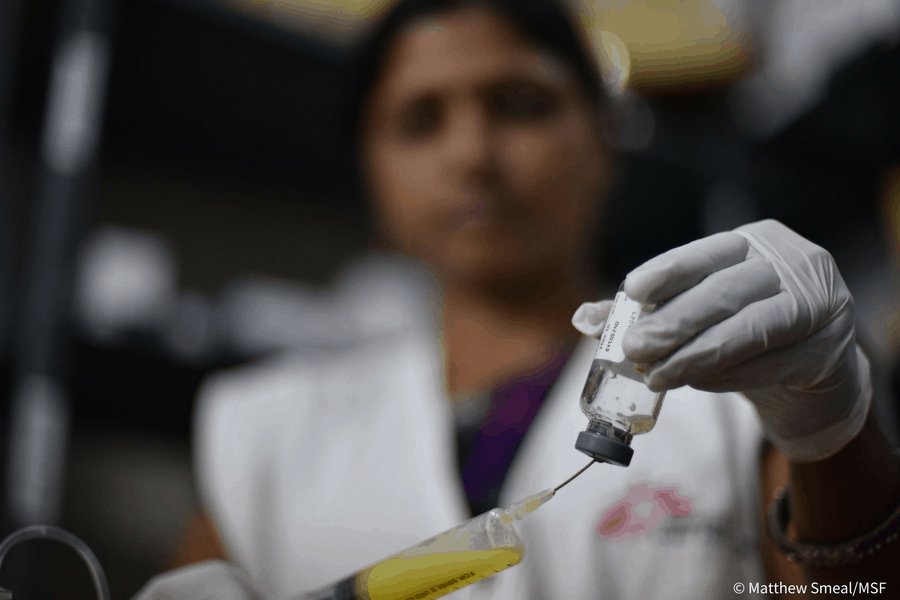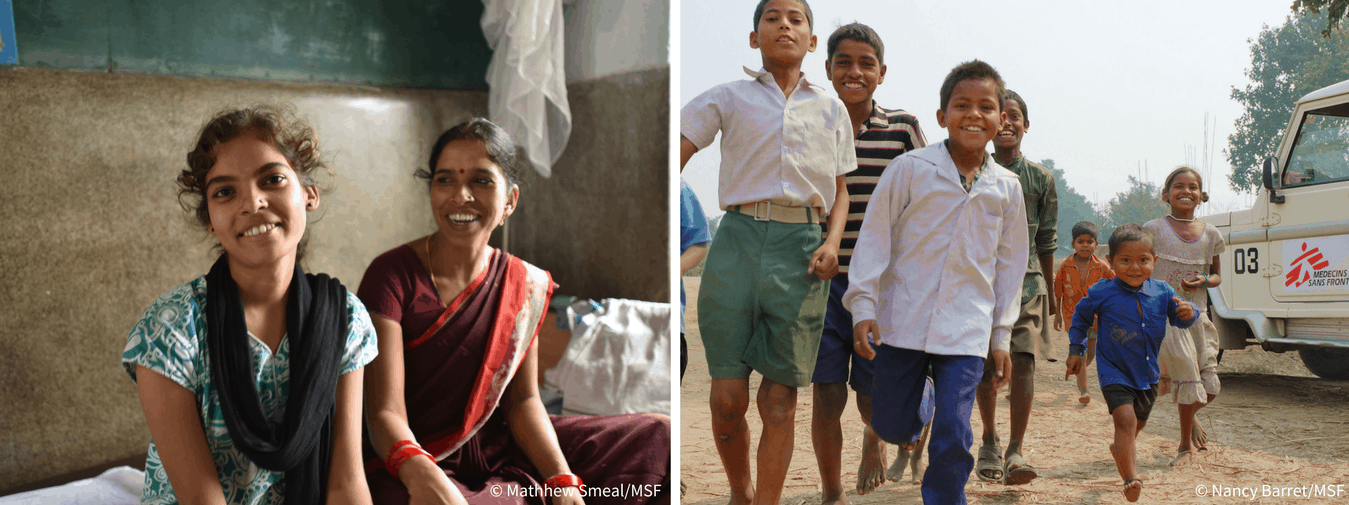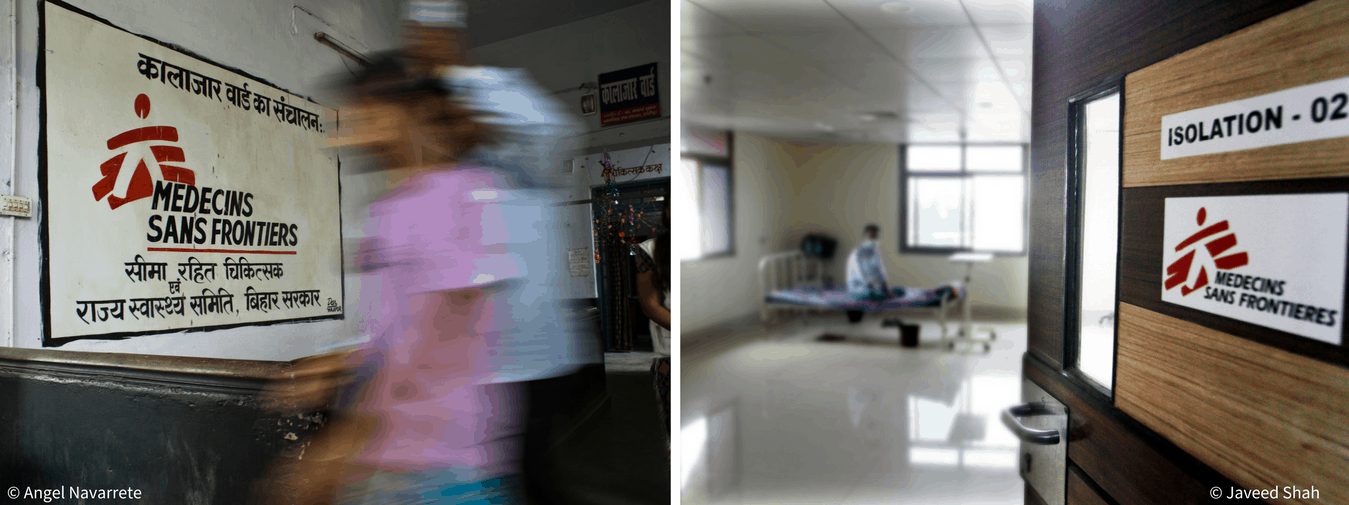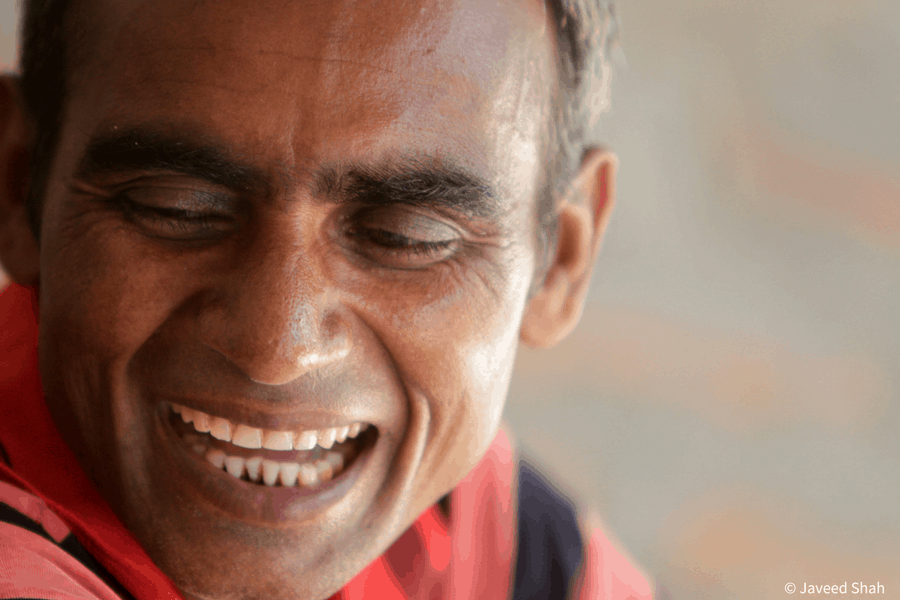Treating kala azar-HIV co-infection in Bihar
Kala jwar. Black fever. Dumdum fever. Visceral leishmaniasis.
These are the many names by which kala azar is known. The disease spreads through the bite of a sandfly or balu makkhi and is almost always fatal if left untreated. India accounts for 50 per cent of the global burden of kala azar, and Bihar has 80 per cent of the cases found within the country.

Kala azar usually occurs in villages where houses have mud walls and earthen floors, and cattle and other livestock are kept close to human dwellings. It disproportionately affects the poorest, most vulnerable communities.
Treatment for kala azar used to take 28 days. However, owing to economic, social and geographical barriers, many patients could not complete their treatment.

Since September 2014, the treatment for kala azar takes only two hours. The shift to a more effective, patient-friendly treatment came about after important safety evidence from a study carried out by MSF and Drugs for Neglected Diseases initiative (DNDi).
As a result of this change in treatment, patients like Naina (below on left) and Sonu (below in blue) are able to spend more time in school and on the playground rather than in a hospital.

After treating more than 13,000 patients since 2007 at Sadar Hospital in Bihar’s Vaishali district, MSF began focusing on the treatment of kala azar-HIV co-infection in partnership with the Rajendra Memorial Research Institute of Medical Sciences (RMRIMS) in Patna in 2016.
Studies show that people living with HIV are over 400 times more likely to develop kala azar. Together, HIV and kala azar make for a deadly cocktail. Co-infected patients are at a greater risk of death as both diseases reinforce each other and weaken the immune system. Moreover, kala azar cannot be completely eliminated without addressing kala azar-HIV co-infection.

A construction worker by profession, Raju*, 40, would frequently travel outside Bihar for work. Two years ago, he decided to settle down in Patna to spend more time with his wife and children. That’s when his troubles began. “I would frequently get fever. My head would feel heavy and my vision would get blurry,” he remembers. “I couldn’t even enjoy my food.”
After being diagnosed with kala azar at Sadar Hospital, Raju tested positive for HIV. “I felt ashamed to tell people. Till date, no one but my wife knows,” he says. “When my kids ask me about my medicines, I have to lie to them.”

Raju’s HIV status makes him susceptible to relapse of kala azar. He is now on antiretroviral (ARV) medication for HIV, and visits RMRIMS at regular intervals so MSF teams can follow up on his kala azar treatment. He has been too weak to work for the last one and a half years, but he is hopeful his situation will change for the better. “I want to get back to work so I can provide for my family again.”












